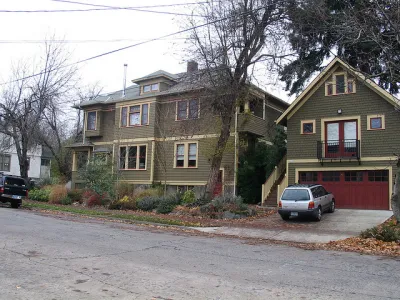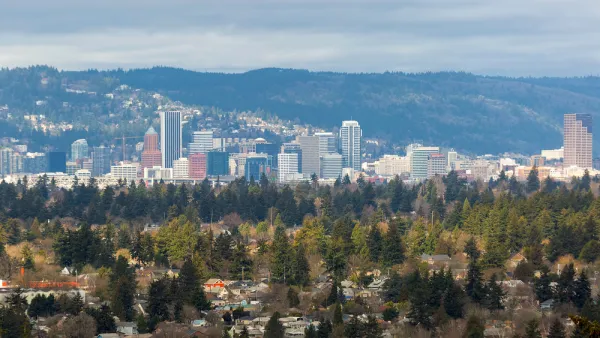A new report by the Urban Institute examines the consequences of small differences in land use regulations.

"Why did accessory apartments catch on in Portland but not DC? A new study from the Urban Institute compares the land-use reform process in each city, as well as the end result."
Libby Solomon shares news of a newly published comparative analysis of the efforts of two cities to allow accessory dwelling units (ADUs): Portland and Washington, D.C.
The premise of the analysis: that Portland has been far more successful in achieving the desired development of ADUs, despite the similar intentions of land use reforms passed in the past decade in each city, both with similar development histories and populations.
"But that’s where the similarities end," writes Solomon to summarize the findings of the report. "[W]hile Portland’s accessory units skyrocketed, with hundreds built each year, DC’s accessory apartments saw a much smaller bump. From 2017 through 2019, Portland issued more than 1,500 ADU building permits; DC issued only 68."
According to the Urban Institute's analysis, property owners in D.C. face structural and historical issue that make ADUs significantly more difficult and expensive to build.
"In the end, DC’s new zoning regulations passed allowing accessory units by right in residential zones. But those regulations are more restrictive than advocates wanted," writes Solomon. "The Urban Institute researchers write that ADU regulations are too complex for many to navigate without hiring lawyers and architects; the space requirements cut out many potential builders; and the rules require the owner to live on the property."
A lot more analysis and insight into the findings of the report are available in the source article.

Analysis: Cybertruck Fatality Rate Far Exceeds That of Ford Pinto
The Tesla Cybertruck was recalled seven times last year.

National Parks Layoffs Will Cause Communities to Lose Billions
Thousands of essential park workers were laid off this week, just before the busy spring break season.

Retro-silient?: America’s First “Eco-burb,” The Woodlands Turns 50
A master-planned community north of Houston offers lessons on green infrastructure and resilient design, but falls short of its founder’s lofty affordability and walkability goals.

Test News Post 1
This is a summary

Analysis: Cybertruck Fatality Rate Far Exceeds That of Ford Pinto
The Tesla Cybertruck was recalled seven times last year.

Test News Headline 46
Test for the image on the front page.
Urban Design for Planners 1: Software Tools
This six-course series explores essential urban design concepts using open source software and equips planners with the tools they need to participate fully in the urban design process.
Planning for Universal Design
Learn the tools for implementing Universal Design in planning regulations.
EMC Planning Group, Inc.
Planetizen
Planetizen
Mpact (formerly Rail~Volution)
Great Falls Development Authority, Inc.
HUDs Office of Policy Development and Research
NYU Wagner Graduate School of Public Service




























